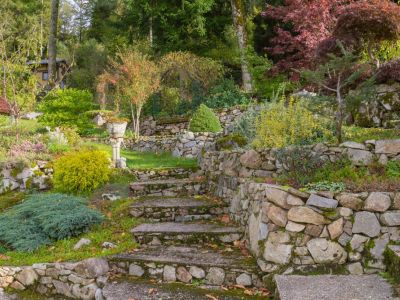Hillside Garden Irrigation
Hillside garden watering is especially important in areas with full sun and during dry spells. In order for water to deeply saturate the ground and reach plant roots, proper irrigation is essential. When it comes to irrigating a hill, drip irrigation or soaker hoses are probably your best choices. This type of irrigation releases water into the soil slowly, reducing runoff and erosion, which commonly occurs when you use overhead watering and sprinkler systems for irrigating a hill. Drip or soaker irrigation methods allow deep penetration of water in the soil, effectively reaching plant roots. While there are special hoses that can be purchased for the purpose of drip or soaker irrigation, it’s just as easy and cost efficient to make your own. Simply poke small holes approximately an inch (2.5 cm.) or so apart along the length of an ordinary garden hose, then clamp off one end and place the hose in the garden. When turned on for hillside garden watering, the water slowly seeps into the ground rather than running off the hill.
Hillside Garden Watering Techniques
In addition to this type of hillside garden irrigation, there are some other helpful hillside garden irrigation techniques that you could implement. For instance, water wells could be built into the hillside garden. These should be dug on the downhill side of plants. Water or rainfall can then fill up the wells and slowly soak into the ground over time. This is also a good way to reduce problems with runoff. Since the degree of slope affects the irrigation method, you may also want to consider how the garden is laid out. Typically, the use of contour rows, terraces, or raised beds will make watering on a hillside easier and more effective for eliminating runoff issues.
